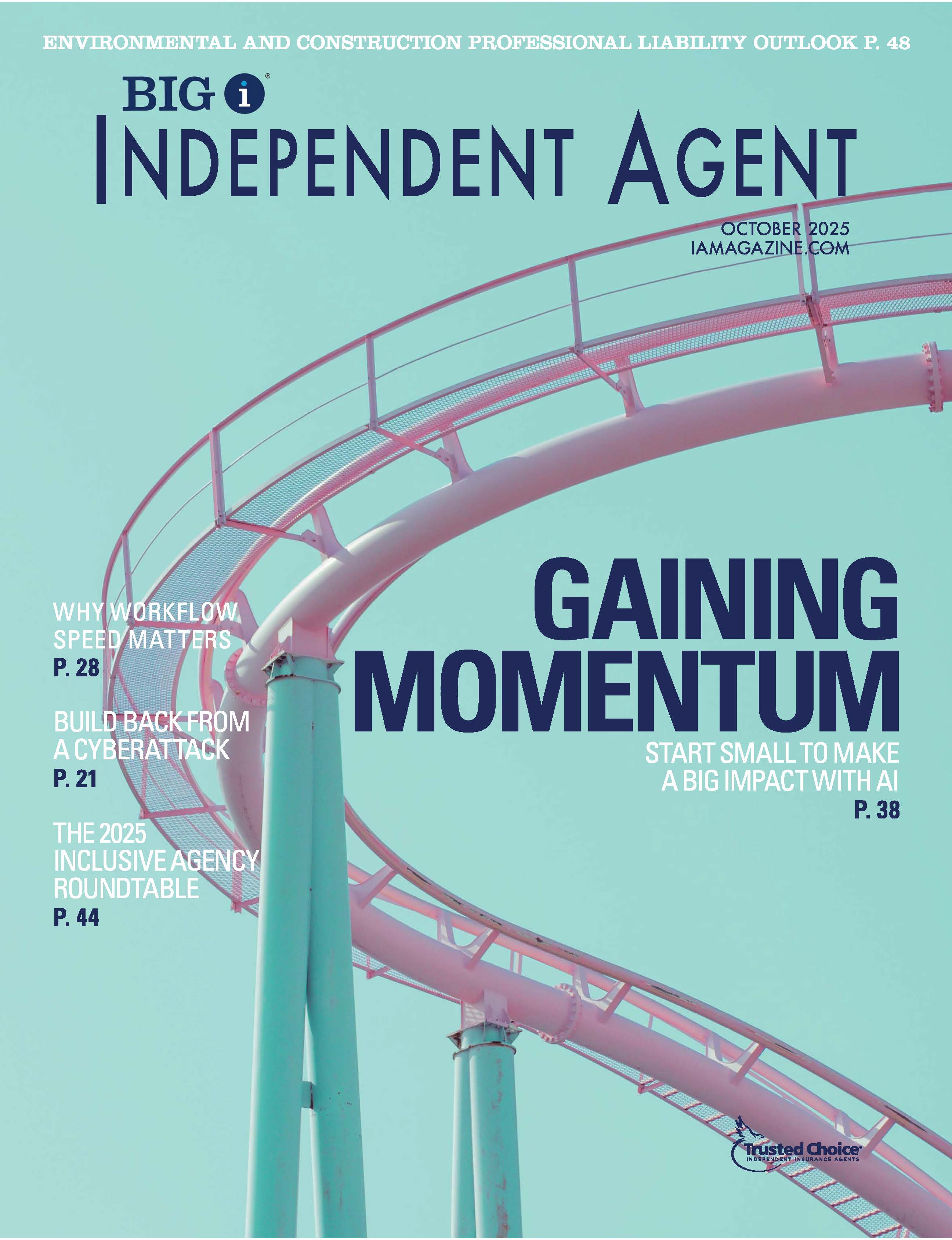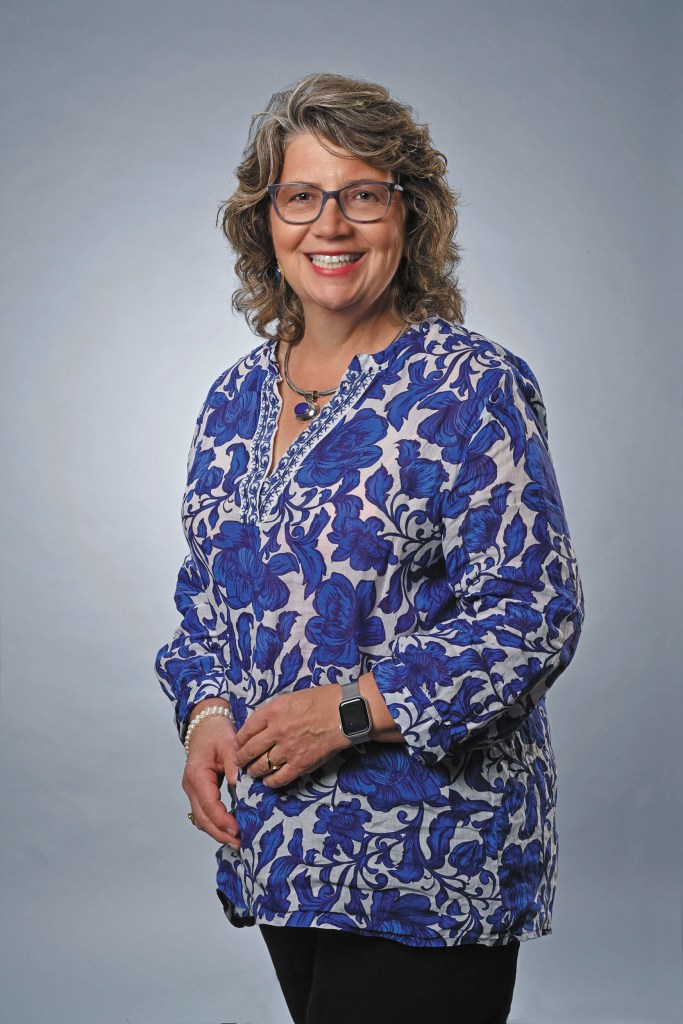3 Digital Marketing Strategies that Amplify Personal Interaction

By: Jordan Reabold
When Sharon Robles, president of the Sharon Robles Agency in Chicago, switched to the independent side after 18 years as a captive agent, she was confronted with the challenge of differentiating her agency from competitors.
“The captive carrier had its own brand strategy,” she says. “When I left, I had to ask myself, ‘Who am I?’ I kept hearing you need to have your own blog, ads, social media—you name it.”
Tackling every form of content marketing was time consuming—and only three or four pairs of eyes would end up seeing three or four hours of Robles’s work. She thought, “Why am I doing this? Who am I trying to target?”
It’s not an uncommon struggle, according to the 2016 Future One Agency Universe Study: 57% of agencies report that marketing their agency effectively on the internet is among their top three technological challenges—a significant increase from the 46% that cited the same challenge in 2014.
It may seem counterintuitive as the digital realm grows, but Marty Agather, senior vice president of client development at TrustedChoice.com, advises agents to “go back to the basics”—and not use digital marketing as a replacement for personal interaction, but rather as a way to amplify it.
“Too many business people believe all their digital marketing efforts are going to be at the bottom of the funnel—the part where the buyer buys,” Agather says. “But much of our marketing should be at the top of the funnel, where awareness happens. Until people are aware of what we do and who we are, they’re never going to be at the bottom of the funnel buying from us.”
Digital marketing enables you to interact with your clients in a way that’s more frequent, yet less invasive. When consumers hear your voice or see your face online, they get the personal interaction without the in-person part—which saves you time and money.
Here are three simple digital marketing strategies you can use to stay top of mind with clients.
E-Newsletters
A decade of email marketing research shows that email is the fastest-growing channel for return on investment in the marketing industry, according to Econsultancy and Adestra’s Email Marketing Industry Census 2016.
After juggling all forms of digital marketing, Robles settled on e-newsletters with the help of Outbound Engine. “I upload all my email contacts, and they send the e-newsletter twice a month,” she explains. “They send out two well-written articles, and there are links in those articles where people can get additional information if they so desire.”
The point, Robles says, is simply to stay on consumers’ radar. “I’m not trying to drive people to my website. I’m not a Home Depot.” It works: Every time an email goes out, she receives five to 10 responses.
“One of my current customers says, ‘I’m glad to hear from you. I forgot to tell you I bought a new car,’ or ‘I’m refinancing my house,’” Robles says. “It is definitely serving the purpose of me staying top of mind with clients if they need insurance or if they’re talking to other people thinking about insurance. Then they’re likely to recommend me.”
Nate Kristy, vice president of marketing at Automational, says email marketing “allows for a lot of customization and feedback. You can learn a lot more about your customers and prospects through email than you can through other channels. What vocabulary drives them to open emails? What content gets clicks more than others?”
And while email marketing campaigns may seem like a tool designed for current clients only, Robles uses them to contact prospective customers as well—and she does it by regularly interacting with the public in person. For about an hour every weekday, Robles drives for ridesharing service Uber, and makes sure passengers never leave the car without providing an email address first.
This winter, Robles filled a clear bottle with snowman erasers and encouraged passengers to write down their name, email and the number of erasers they thought were in the container. “I connect with them in my vehicle, but I’m also adding these names to my email marketing campaign,” she says. “When they need insurance and they need the Uber lady’s number, they know how to get it because they’re getting emails from me.”
How to get started: Kristy recommends setting reasonable goals for your first batch of e-newsletters: “Make decisions about how often you anticipate doing this and what type of things you want to include,” such as blog posts or new product promotions.
Robles finds that the most-clicked articles are often those that aren’t even about insurance. “Some of the popular articles talk about when it’s a good time to plant your bulbs for your spring tulips,” she says. “It’s homeowner related, but it’s not always in your face about insurance.”
Kristy agrees the content doesn’t always have to be insurance-centric, as long as it “matters to your ideal target persona.”
The most common misconception with email marketing, Kristy says, is that you should expect results immediately. “It’s definitely a building investment of energy. Engagement happens over the long term. Credibility builds over the long term. And content marketing is an investment in all of that.”
Blogs
Is your agency’s website the extent of your marketing plan? Chris Huntley, president of Huntley Wealth Insurance Services in San Diego, says that’s a common mistake. “The problem is that a lot of websites contain images which can’t be read or seen by Google and other search engines,” he explains. “What you need is searchable text, and the easiest way to do that is by writing blog articles.”
Agather thinks of blogging as a way to solve consumers’ problems. “When you’re researching something online, rarely are you scanning Tweets or running through your Facebook feed to find the solution,” he points out. “Instead, you’re looking at websites, and quite frequently, you find a blog. You get answers to questions you had, and you may uncover answers to questions you never knew existed.”
If you’re a storyteller, blogging is the digital marketing medium for you. “From a personality and relationship status, blogging allows customers and prospects to get a better feel for who you are as a human,” Agather explains. “It’s person-to-person relationships that make this business.”
Huntley found success by leveraging that personal interaction in his blogs. “When I started out, I wrote about some of the clients I had helped,” he recalls. “I didn’t know what else to write about, so I wrote about who they were, their problems, their health conditions, the kind of insurance they were looking for and any roadblocks we hit.”
The clients Huntley wrote about ended up having a lot in common with the ones seeking him for new business. “In one case, I helped a guy who had a heart valve replacement. After that blog, for a few weeks I started getting all these heart clients because they were searching online and finding that article.”
How to get started: Whereas your website should include general information about the lines of insurance you sell, your blog posts should include unique content. “Write with your own voice,” Huntley advises. “It’s better to write about the unique ways you can help people and the unique problems that you solve.”
The more distinctive your blog is, the more likely search engines will pick it up, Agather explains—which is why blogs are perfect for agencies that offer specialty insurance. If you’re an agency in Bethlehem, Pennsylvania that provides insurance for bakeries, your agency is likely to appear at the top of the search result when a local bakery is looking online for coverage.
“Talk about things that are unique to the area, because that’s a consumer interest component,” Agather suggests. “If you get turned on to my blog, you’ll love the fact that I’m tied to the community.”
To promote your blogs and drive more people to your business, ask other businesses to share it with their customers. “Early on, I wrote an article letting consumers know they can get non-tobacco life insurance rates with one of our companies,” Huntley says. “I found a bunch of cigar websites and cigar shops and sent out a few dozen emails to let them know about the resource. A handful of them shared my content.”
Writing quality content takes time, but Agather points out that you can blog anywhere, anytime—and you can disperse blogging responsibilities among everyone at your agency to share the burden.
Video
Diode Digital reports that 60% of website visitors would rather watch a video than read text, and Marketing Profs reports that the average user spends 88% more time on a website with video compared to a website without.
“Most people are visual learners,” says Mike Demko, founder & CEO of MyInsuranceVideos.com. “Should you appear on camera, it’s a great way to establish trust and credibility. Prospects want to understand how you can help protect their assets and their family from financial hardship by taking a look at you.”
Nick Ayers, owner & co-founder of i80 Insurance Solutions in Vacaville, California, uses video during every step of a client’s insurance journey: “We use video to enhance our retention rate and our overall customer experience. We incorporate video into automation campaigns for new business and client nurturing. We also use video for welcome onboarding kits, for the renewal process and for quoting.”
Demko agrees that video should have a prominent role in the quoting process. ”If I quote your home and auto, I’m going to send you a video that supports the conversation we had,” he says. “When agents include video, the customer experience is better, and they sell more policies.”
Bonus: Video can expand the reach of your communication with clients. “We do business throughout the state, so I see probably 1% of my client base in office,” Ayers points out. “Most people I never see. I use video to connect with them.”
If you’re camera shy, testimonials are a great way to use video and leverage that human element. “If you just helped someone in the claims or sales process, highlight the customer experience—people like to see that stuff,” Ayers recommends. “If I go on a video and say, ‘Buy insurance from us because we have such-and-such carriers,’ nobody cares about that. But if I get on there and say, ‘We saved this client $500 a year!’ and then ask that client what they’re going to do with that money, people will watch that.”
How to get started: Demko’s video advice for beginners is to keep it brief, include music, use landscape mode and shoot in front of a clean background with good lighting.
“Include a video in every email that leaves your office,” Demko suggests. “Post a Happy Birthday video on your clients’ Facebook pages. It’s a soft touch for you to use to reconnect with your prospects and clients in a tactful but not cheesy way.”
Don’t have video equipment? Record on a smartphone or webcam. At the end of the day, Ayers says, “authenticity beats polish 100% of the time. How polished was Chewbacca Mom? Not at all. The videos that win online are the ones that are real.”
And video is not exclusive to personal lines clients. When Ayers is serving restaurant and food service clients, he uses video to promote their businesses, not his. “I go to them and say I’m passionate about helping local businesses thrive. I ask if they’d be comfortable with me doing an interview with them—Diners, Drive-Ins and Dives style. They take me to the kitchen and cook me some food, and I talk about how great it is, then send it to them to share on their Facebook.”
It’s successful because sales is about the value you can provide for someone else. “You’re not trying to swindle them into buying insurance from you,” Ayers explains. “I’ve never made a video for someone who hasn’t gotten their insurance from me.”
For Demko, “the biggest misconception agents have about video is they don’t know there’s an easy option out there. We live in a digital world. Those that adopt the mindset of digital marketing will thrive. Those that don’t will not.”
Jordan Reabold is IA assistant editor.










